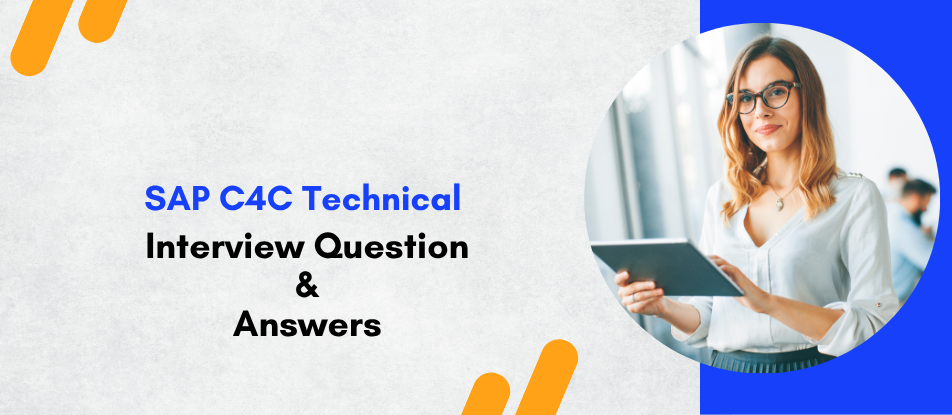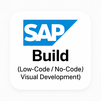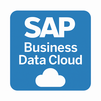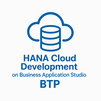
The SAP C4C Technical Training course provides an advanced understanding of SAP Cloud for Customer architecture, customization, and integration. Participants learn to develop, extend, and automate solutions using SAP Cloud Application Studio (SDK), ABSL scripting, and OData services. The course covers Business Object modeling, event handling, workflow automation, and secure integration through SAP CPI. Designed for developers and technical consultants, it equips learners with the skills to design, deploy, and manage scalable, upgrade-safe C4C solutions aligned with enterprise CRM requirements.
SAP C4C Technical Training Interview Questions Answers - For Intermediate
1. What are Extension Fields in SAP C4C, and how are they used?
Extension fields allow users to customize standard objects without altering core functionality. They can be created using the Key User Tools (KUT) or SDK. These fields can appear in reports, forms, and UIs, and can also be integrated with backend systems through mapping. This flexibility helps tailor the application to specific business requirements.
2. What is the difference between Fine Tuning and Scoping in SAP C4C?
Scoping defines which features and business processes will be active in the system during initial setup, while Fine Tuning involves configuring specific details within those activated features. Scoping occurs once during implementation, whereas fine-tuning can be adjusted later to refine data fields, rules, or business configurations.
3. What are Custom Business Objects (CBOs) in SAP C4C?
Custom Business Objects are developer-defined data entities created in the SDK (SAP Cloud Application Studio). They extend standard data models when existing objects do not meet business needs. CBOs can contain elements, associations, and scripts, allowing complex relationships and custom logic to be implemented efficiently.
4. What are the main types of UI components available in SAP C4C SDK?
SAP C4C SDK provides several UI components such as Object Worklists, Quick Views, TI (Thing Inspector) screens, and OWL (Object Worklist) views. These components define how data is presented and interacted with. Developers use the UI Designer tool to bind data fields, configure layouts, and control navigation.
5. How does SAP C4C handle Offline Functionality?
SAP C4C supports offline mode primarily for sales representatives using mobile devices. Users can access cached data, create records, and perform key operations while disconnected. Once the device reconnects, synchronization occurs automatically. Offline rules define which data is available and which actions can be performed without connectivity.
6. How do you perform debugging in SAP Cloud Application Studio?
Debugging in SAP Cloud Application Studio is done through the Trace Tool and Debug Console. Developers can monitor runtime logs, inspect variable values, and use breakpoints within ABSL scripts. Additionally, system logs and SOAP traces provide insights into backend integrations and runtime behavior.
7. What are the available data sources for reporting in SAP C4C?
Reports in SAP C4C can be based on Standard Data Sources (ODS), Combined Data Sources (CDS), or Custom Data Sources. Standard sources are provided by SAP, while combined sources merge multiple entities. Custom data sources can be built using CBOs or extended standard objects for specialized reporting.
8. What are Communication Arrangements in SAP C4C?
Communication Arrangements define how SAP C4C connects with other systems. They specify inbound and outbound services, credentials, and technical details like service URLs. Each arrangement is linked to a Communication Scenario, which bundles web services and integration artifacts for secure and controlled data exchange.
9. What is the use of OData services in SAP C4C?
OData (Open Data Protocol) services enable lightweight REST-based integration for SAP C4C. They are commonly used for custom UI applications, mobile apps, and analytical dashboards. OData supports CRUD operations and offers efficient data retrieval through filtering, pagination, and metadata exposure.
10. How do you deploy a solution developed in SAP Cloud Application Studio?
After development, solutions are deployed using the Solution Management view within the studio. The process involves checking consistency, building the solution, and uploading it to the SAP C4C tenant. Developers can deploy to test tenants before moving to production, ensuring quality and stability.
11. What is the role of PDI (Partner Development Infrastructure) in SAP C4C?
PDI allows partners and developers to create add-ons or custom solutions without affecting the core SAP system. It provides SDK access, version management, and deployment capabilities. Through PDI, partners can deliver modular, upgrade-safe enhancements that integrate smoothly with SAP C4C.
12. How can you ensure data consistency during C4C and ERP integration?
Data consistency is maintained using ID mapping, data replication monitoring, and error handling mechanisms. Middleware like CPI ensures reliable message delivery, while synchronization logs help identify mismatches. Consistent master data governance and defined integration keys prevent duplication and data loss.
13. What is the use of Rule Editor in SAP C4C?
The Rule Editor helps define conditions, formulas, and validations in a declarative way. It can control field visibility, default values, and workflow triggers. Business users can configure rules without coding, improving flexibility and reducing dependency on technical teams for minor logic changes.
14. What are Inbound and Outbound Web Services in SAP C4C?
Inbound services allow external systems to push data into SAP C4C, while Outbound services enable C4C to send data to other systems. For instance, inbound services handle order creation requests, whereas outbound services push sales quotes to ERP. Both SOAP and OData formats are supported for these communications.
15. What is the difference between Mashup and Integration in C4C?
Mashups provide UI-level integration by embedding external content such as websites or maps, while integration connects systems at the data level using APIs or middleware. Mashups enhance visualization and context, whereas integration ensures seamless data synchronization and business process continuity.
SAP C4C Technical Training Interview Questions Answers - For Advanced
1. How does the SAP Cloud Application Studio (SDK) enable end-to-end extensibility in SAP C4C?
The SAP Cloud Application Studio (SDK) provides developers with a comprehensive environment to build, enhance, and extend SAP C4C functionalities without compromising system integrity. It includes tools such as the Business Object Designer, UI Designer, and ABSL scripting editor, which allow for deep customization of business logic, data models, and interfaces. Through SDK, developers can create Custom Business Objects, define associations with standard ones, and introduce automation using event handlers and validations. Furthermore, the SDK supports Solution Lifecycle Management, enabling developers to build, deploy, and version solutions across tenants. All customizations are encapsulated within solutions to ensure upgrade safety, meaning system upgrades by SAP do not overwrite or disrupt partner or customer-developed enhancements.
2. How can asynchronous data exchange be implemented between SAP C4C and other systems?
Asynchronous communication is essential when real-time synchronization is not feasible or necessary. SAP C4C uses middleware platforms like SAP Cloud Platform Integration (CPI) to manage queued messages via asynchronous interfaces. When a business event occurs in C4C, the data is sent through an outbound web service or message queue using SOAP. The receiving system acknowledges receipt, but the actual processing happens later. This design avoids blocking the sender system and allows retry mechanisms if transmission fails. Additionally, message logging and persistence in CPI ensure reliability and auditability. Asynchronous exchange is especially useful in high-volume integrations, such as order processing or bulk data synchronization with legacy systems.
3. Explain how to handle custom error management and exception handling in ABSL scripting.
In ABSL scripting, error handling is implemented through try-catch blocks, which help manage runtime exceptions during data manipulation or service calls. Developers can raise custom exceptions using the raise Error() or raise Warning() statements, which display user-friendly messages at runtime. To ensure robust error tracking, logs can be generated via the Trace tool for debugging complex interactions. In cases involving external web services, structured exception responses can be parsed and logged within custom BOs for audit purposes. Proper error management ensures that users receive meaningful feedback instead of system crashes, maintaining both data consistency and user experience.
4. How does the deployment process of SDK solutions ensure system stability and version control?
The deployment process in SAP C4C SDK involves strict consistency checks to ensure that a solution is error-free before it reaches the production tenant. Developers first perform local builds to validate syntax, metadata, and runtime dependencies. Once validated, the solution is uploaded to the target tenant using the Solution Management view. Each deployment generates a new version ID, allowing rollbacks if needed. The SDK enforces namespace isolation so that custom objects or fields do not interfere with standard SAP components. Moreover, system upgrades or patches automatically detect potential conflicts, and administrators can test compatibility in staging environments before promoting solutions to production.
5. What are the different types of extension fields in SAP C4C, and how are they integrated with external systems?
SAP C4C supports two main types of extension fields: KUT (Key User Tool) fields and PDI (Partner Development Infrastructure) fields. KUT fields are created directly in the UI by administrators for simple extensions, whereas PDI fields are built using the SDK for complex integrations. These fields can be included in reports, data sources, and integration flows. When integrated with backend systems like S/4HANA, extension fields are mapped via Custom Communication Scenarios or through OData service extensions. SAP CPI handles field transformations to align C4C extensions with corresponding backend attributes, ensuring seamless data flow across systems.
6. How can developers ensure upgrade-safe customizations in SAP C4C SDK?
To maintain upgrade safety, developers must adhere to SAP’s Public Solution Model (PSM) guidelines, which restrict direct modification of core objects. Instead, extensions should use available APIs, extension points, and events exposed by SAP. The SDK enforces encapsulation, meaning all extensions remain isolated within custom namespaces. Using standard extension mechanisms like BeforeSave events or extension BOs ensures compatibility with future SAP releases. Additionally, developers should regularly perform pre-upgrade compatibility checks and revalidate solutions after major system updates to confirm that no deprecated APIs are in use.
7. How does SAP C4C manage multi-system integration when multiple middleware layers exist?
In complex enterprise landscapes, SAP C4C often integrates with multiple middleware systems—like CPI, PI/PO, or third-party ESBs. Integration orchestration is achieved through a layered approach where CPI acts as the central hub managing message routing and transformation. Each middleware is assigned distinct responsibilities—PI might handle legacy system communication, while CPI manages cloud-to-cloud interactions. Message sequencing, correlation IDs, and canonical data models are used to maintain coherence across systems. Additionally, integration monitoring tools in both C4C and CPI provide end-to-end traceability, ensuring that message handoffs between multiple systems remain consistent and auditable.
8. Describe the concept of “Data Workbench” and its role in C4C data management.
The Data Workbench in SAP C4C is a powerful tool designed for importing, exporting, and updating large datasets efficiently. It supports incremental data loads, validations, and mapping templates that align uploaded data with system objects. Administrators can use it to perform mass data migrations, schedule recurring uploads, and even automate synchronization with external systems via APIs. The Data Workbench validates records against existing data models, ensuring referential integrity, and logs any inconsistencies for review. It also supports staging tables, allowing data to be verified before final posting, thus reducing data corruption risks during migration.
9. How can developers enhance UI performance in SAP C4C through SDK and configuration optimization?
Optimizing UI performance requires reducing client-server interaction and minimizing unnecessary data loads. Developers achieve this by disabling unused fields, using lazy loading for list views, and leveraging Quick View patterns for summary information. In SDK, the UI Designer allows conditional rendering of elements based on user roles or workflow status, improving responsiveness. Business logic should be implemented at the backend via ABSL rather than client-side scripting to reduce UI latency. Additionally, caching frequently accessed data and limiting large OWL (Object Worklist) queries with filters improve rendering time and overall user experience.
10. How does SAP C4C handle transactional consistency during complex integrations?
Transactional consistency is maintained through message sequencing, ID mapping, and acknowledgment mechanisms. When C4C interacts with ERP systems for transactions such as order creation or invoice posting, the integration ensures that dependent messages follow the same sequence. If one transaction fails, rollback logic prevents partial data persistence. CPI provides transactional logging with correlation IDs, ensuring that each message can be traced through its lifecycle. SAP also employs retry mechanisms for transient failures and reconciliation reports for monitoring end-to-end data synchronization between systems, maintaining a single source of truth.
11. Explain the security framework governing external API exposure in SAP C4C.
SAP C4C employs a comprehensive security framework to govern API interactions. All external API access requires authentication via OAuth 2.0, SAML tokens, or certificate-based authentication. APIs can be scoped to specific business objects or operations to prevent unauthorized access. Additionally, CSRF protection and rate limiting mechanisms prevent abuse. Developers can create custom Communication Arrangements defining which APIs are exposed and under what security policies. Role-based access control ensures that only authorized users or systems can invoke certain endpoints. Logging and audit trails capture every API request, enhancing compliance and security visibility.
12. How can SAP C4C integrate AI/ML capabilities within its ecosystem?
AI and ML capabilities can be integrated into SAP C4C using SAP Business Technology Platform (BTP) services such as SAP AI Core or external models via OData APIs. Predictive analytics, lead scoring, and sentiment analysis can be embedded directly into C4C business processes through mashups or SDK-based service calls. For example, a machine learning model deployed on SAP AI Core can predict customer churn, and its output can automatically update C4C opportunity scores. Integration with SAP Analytics Cloud (SAC) further enhances data visualization and insight generation, turning raw CRM data into actionable intelligence.
13. How are localization and tax rule automations implemented technically in SAP C4C?
Localization and tax automation are achieved through Country-Specific Configuration Sets and Business Configuration (BC) Rules. These configurations determine regional compliance requirements such as tax rates, invoice templates, and numbering schemes. Developers can extend these settings via SDK by creating conditional logic within ABSL scripts that dynamically adjust field values or workflow steps based on country codes. Integration with SAP S/4HANA or external tax engines ensures up-to-date rates and compliance with local regulations. This approach centralizes global tax management while maintaining flexibility for local adaptations.
14. What methods are used to ensure backward compatibility when extending standard business objects?
Backward compatibility is maintained through Public Solution Model (PSM)-compliant extensions, which prevent direct modification of SAP-delivered entities. Extensions are done using “Enhancement Implementation Nodes” rather than altering core metadata. During upgrades, the system retains these extensions in separate namespaces, ensuring they remain functional even when SAP updates core structures. Developers must regularly validate custom code against the new version’s metadata model. Any deprecated methods or fields should be refactored before deployment to ensure consistent system behavior post-upgrade.
15. How do you design a high-availability integration landscape for SAP C4C in enterprise-scale deployments?
A high-availability integration architecture involves redundancy, load balancing, and failover mechanisms across all connected systems. In a robust setup, multiple CPI instances operate in active-active mode, distributing API traffic evenly. Failover routing ensures that if one node fails, transactions are automatically redirected to another. Message queues persist unsent payloads to avoid data loss. C4C itself relies on SAP’s multi-tenant cloud infrastructure, which ensures uptime through distributed data centers. Additionally, periodic failover testing, monitoring dashboards, and alerting systems guarantee resilience and continuity, making the system enterprise-ready even during peak transaction loads.
Course Schedule
| Nov, 2025 | Weekdays | Mon-Fri | Enquire Now |
| Weekend | Sat-Sun | Enquire Now | |
| Dec, 2025 | Weekdays | Mon-Fri | Enquire Now |
| Weekend | Sat-Sun | Enquire Now |
Related Courses
Related Articles
Related Interview
Related FAQ's
- Instructor-led Live Online Interactive Training
- Project Based Customized Learning
- Fast Track Training Program
- Self-paced learning
- In one-on-one training, you have the flexibility to choose the days, timings, and duration according to your preferences.
- We create a personalized training calendar based on your chosen schedule.
- Complete Live Online Interactive Training of the Course
- After Training Recorded Videos
- Session-wise Learning Material and notes for lifetime
- Practical & Assignments exercises
- Global Course Completion Certificate
- 24x7 after Training Support












 Join our Live Instructor-Led online classes delivered by industry experts
Join our Live Instructor-Led online classes delivered by industry experts